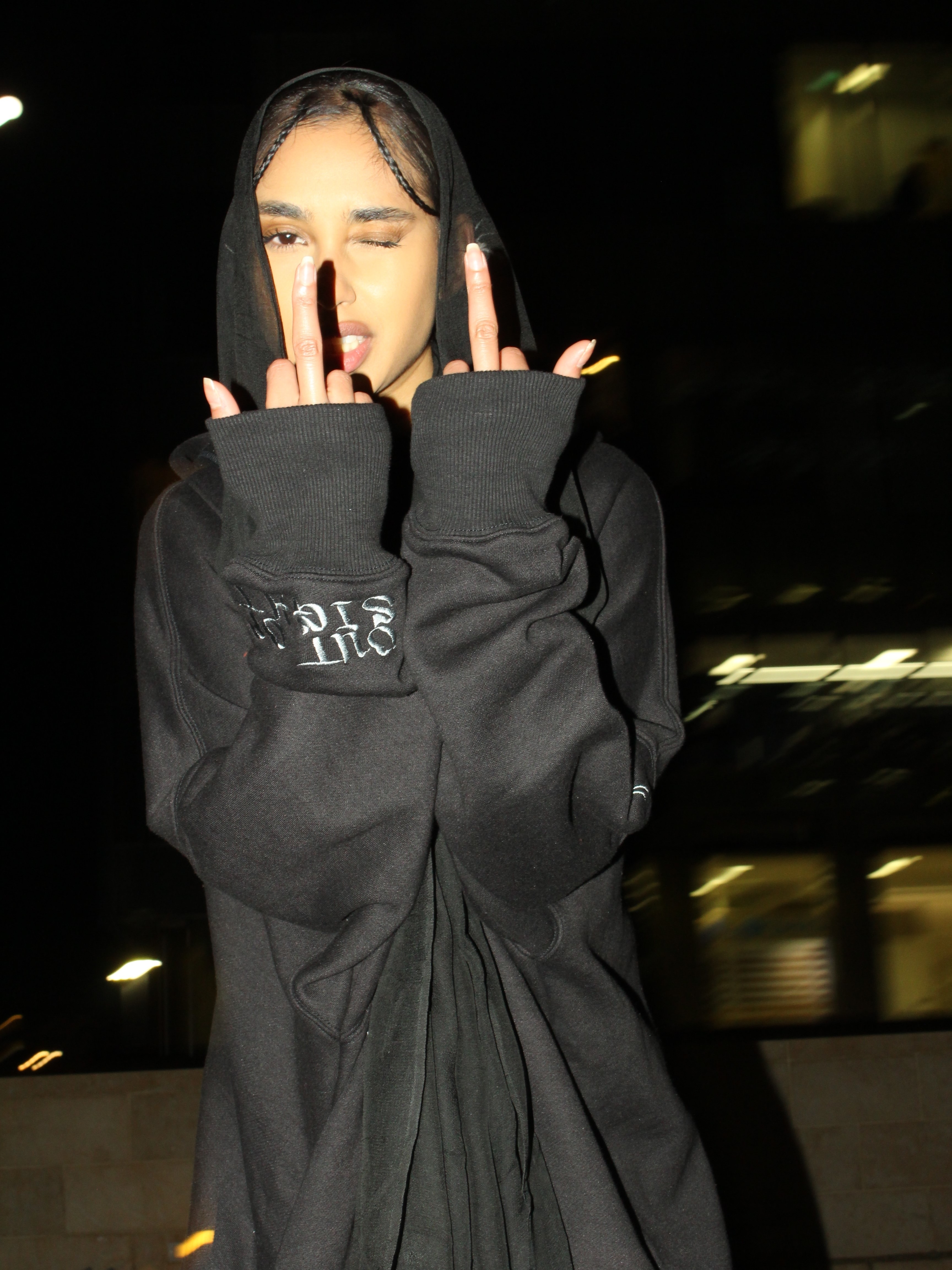“It’s ironic,” Saeedah Haque mused, reflecting on her time interning at London Fashion Week, “to be in a space where creative clothing is being celebrated yet feel out of place because of your clothing.” Though she had always been interested in fashion and deeply passionate about human rights, the young British-born Muslim woman studied business and geography at university, earning traditional degrees familiar to her Bangladeshi immigrant parents. Upon graduating, she landed a 9-to-5 in the humanitarian sector that eventually left her unfulfilled. Yet, it wasn’t until after she witnessed the growing presence of South Asian designers online — who embraced their cultures while imbuing political statements into their creative works — that Saeedah felt inspired to explore a career in fashion. In hopes of learning more about the industry, she began pursuing fashion internships and soon found herself at London Fashion Week.

However, amidst the prestige and glamor of one of the “Big Four” (the others being New York, Milan, and Paris Fashion Weeks), Saeedah felt out of place. She noticed she dressed conservatively compared to the designers she spoke with, her head adorned with a hijab. For three years, this sense of displacement lingered before Saeedah boldly made the decision to establish her eponymous label, Saeedah Haque, confronting South Asian and Muslim underrepresentation in the fashion industry through her “unapologetically modest” designs.
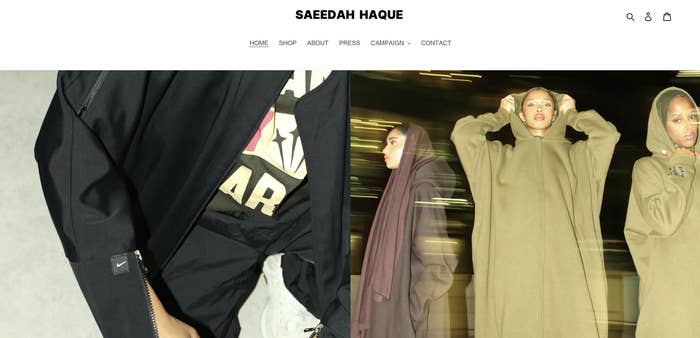
Since then, Saeedah’s creations, most notably her innovative “hoodie abaya,” a contemporary interpretation of the traditional garment worn by Muslim women, have gone viral. Fusing influences from London’s edgy streetwear scene and gritty hip-hop culture, her pieces have captivated audiences around the world. On TikTok, where she’s shared her work, Saeedah has amassed more than 200K followers, 6M likes, and comments from celebrities like American singer-songwriter Kehlani, British MC and rapper Dizzee Rascal, and British rapper AJ Tracey, to name a few. She even caught the attention of Nike, resulting in the release of a limited Nike By You collection. More impressively, the five original collections she’s dropped on her online storefront have sold out within minutes of going live.
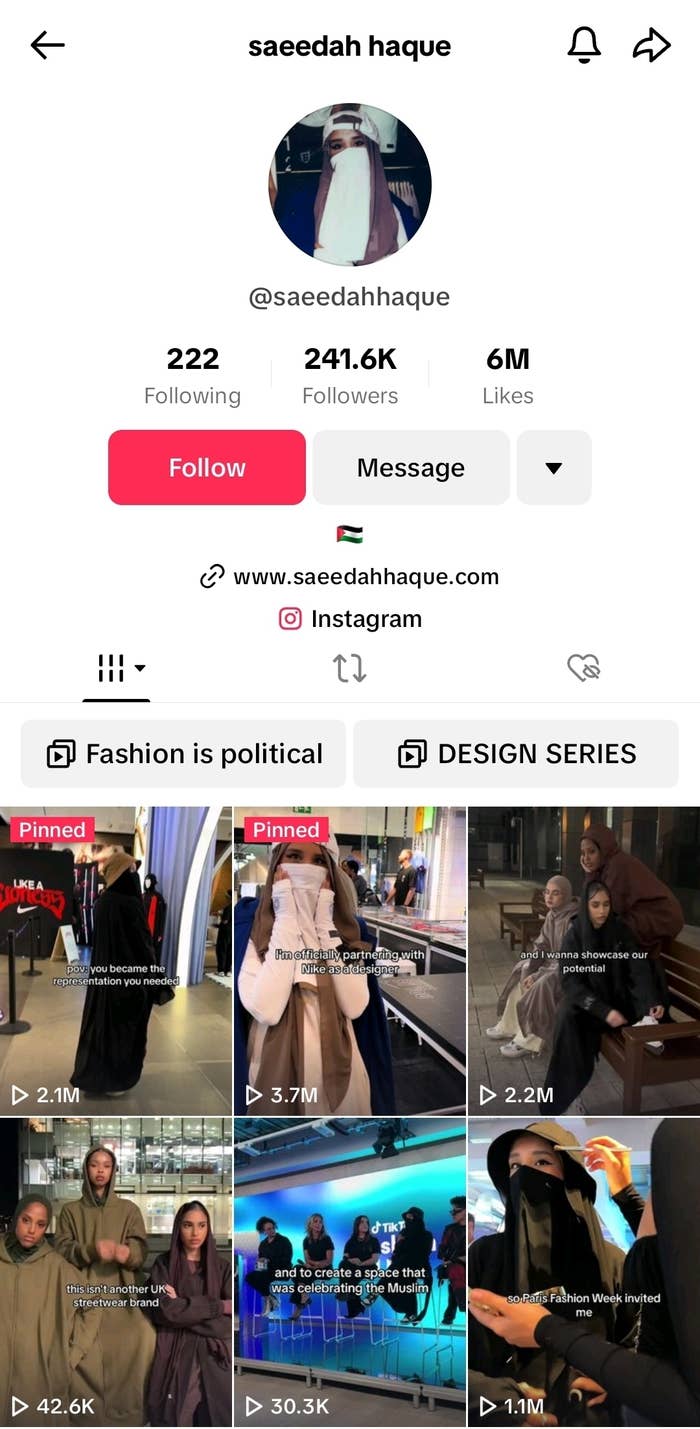
But for Saeedah Haque, both the person and the label, fashion transcends mere clothing; it serves as a medium for storytelling, cultural identities, and political assertions. In a society rife with the relentless scrutiny of women’s bodies and choices — including school dress codes, victim blaming, mom shaming, and hijab bans — Saeedah recognizes the emergence of fashion as a powerful tool for reclaiming agency. Through her embrace of unapologetic modesty in design, as seen with the hoodie abaya, Saeedah emboldens women, and especially Muslim women, to assert their autonomy in a world that often seeks to police their freedoms.
Growing up in London, Saeedah often struggled to dress herself in a way that reconciled her personal style (young, modest, and comfortable streetwear) with her faith — but that was more because of a general lack of options than Islamic rules of modesty. As Saeedah explained, modesty in Islam is fluid; it’s not as much about wearing a specific garment as it is fulfilling a certain tenet. For example, despite its common association with women’s headscarves in the West, the term “hijab” actually translates to “barrier” in English and generally refers to covering one’s hair, whether it be with a ballcap or headscarf. But unfortunately for Saeedah, most modest garments she came across in London seemed more suited for older women. “I guess that’s because it seemed like more older people were observing the hijab in a strict way,” she speculated.
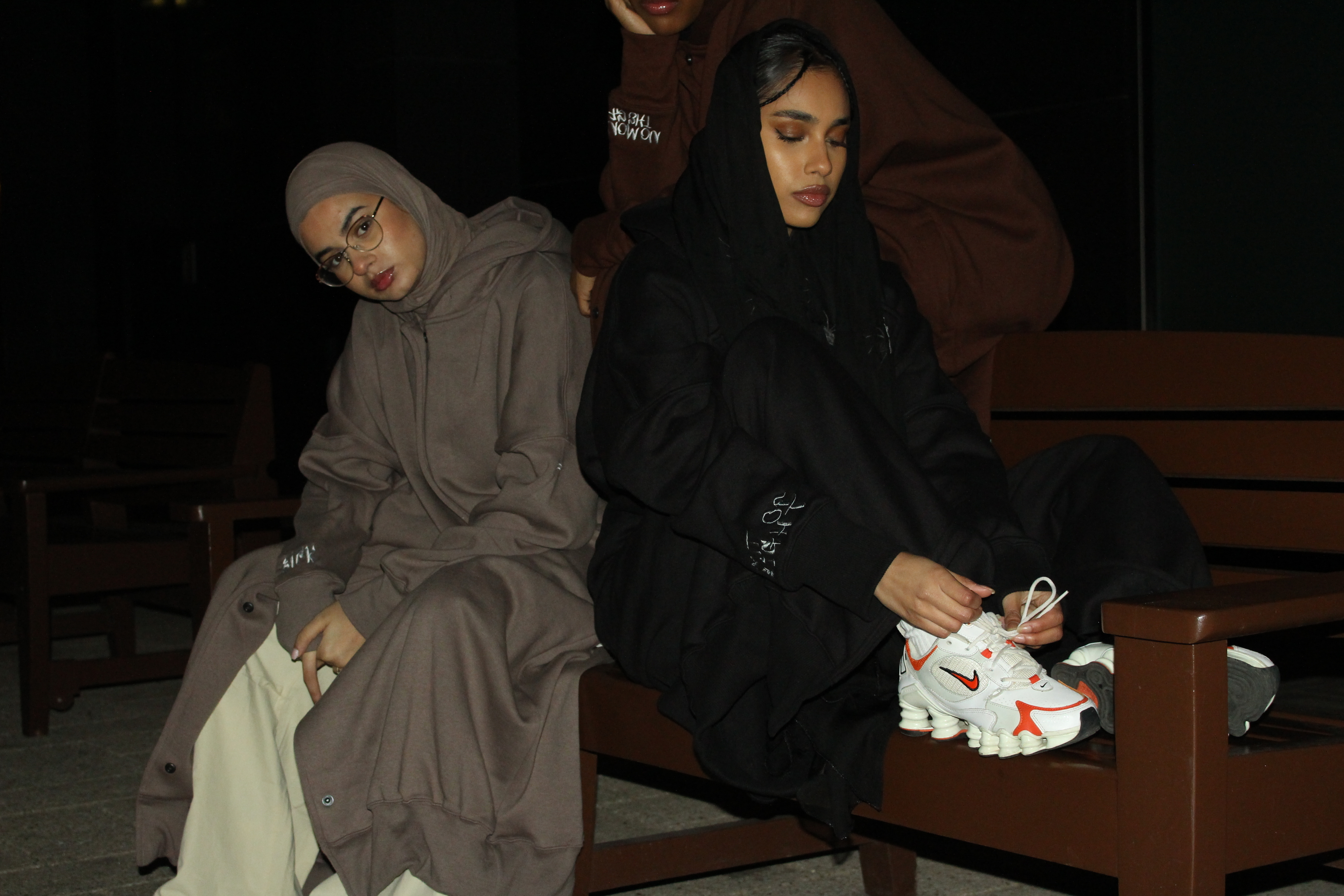
This misconception around Islamic rules of modesty also stems from the conflation of Islam and Arab culture in the West (a conflation often fueled by anti-Islamic sentiment and Orientalism). In the East, where Islam is more prevalent, countries interpret Islamic clothing through their own religious histories, cultural aesthetics, and political contexts.
Elizabeth Bucar, a professor of religion at Northeastern University, observed this when researching Muslim women’s fashion in Iran, Indonesia, and Turkey — three Muslim-majority and non-Arab countries. Their distinct styles, she asserted, “[push] back against the idea that what counts as proper Islamic clothing is dictated by the Arab world and then merely adopted in other locations,” thus resisting the notion of a homogenized Islam.
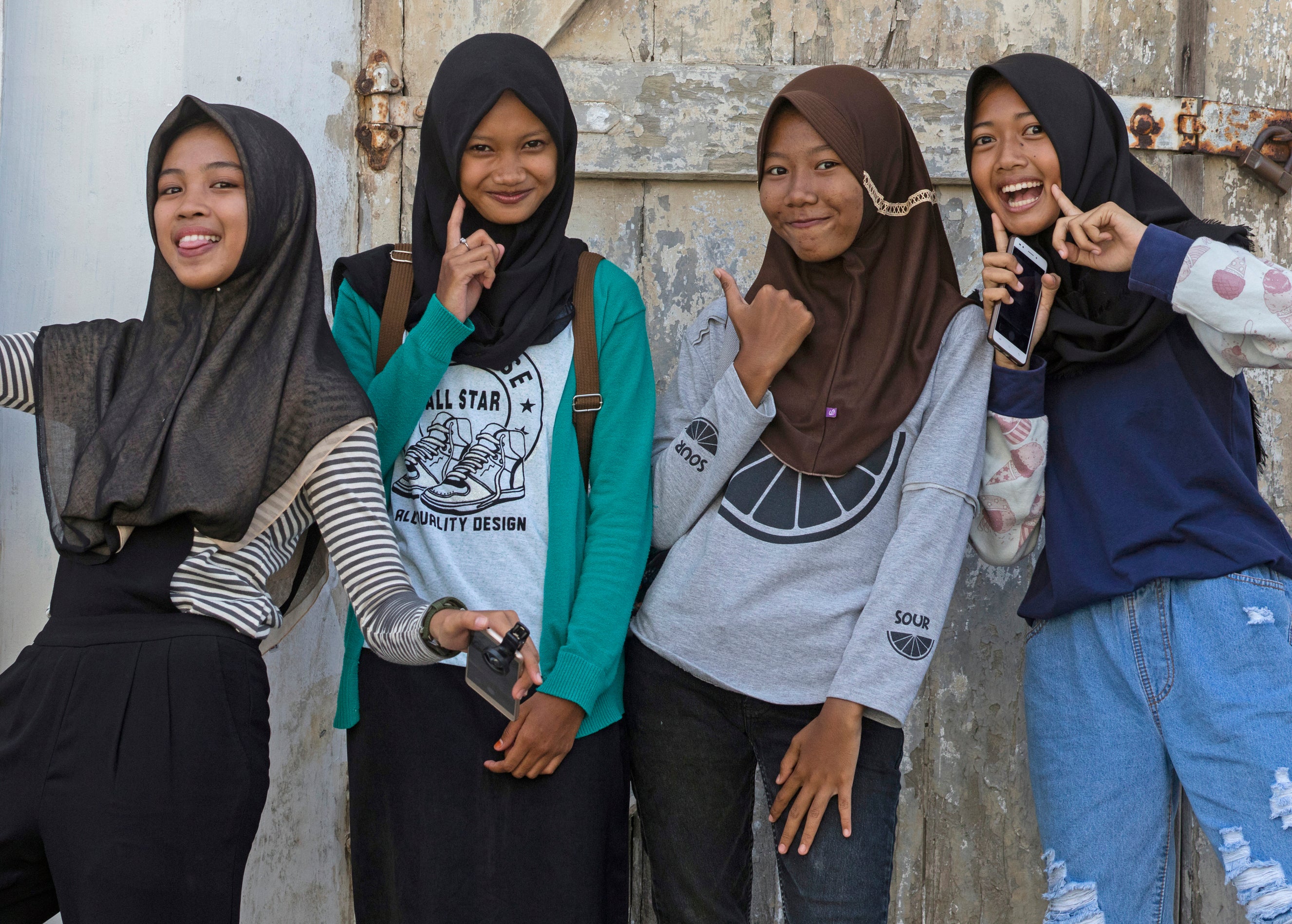
As a London native, Saeedah’s interpretation of the abaya draws inspiration from the raw essence of the city’s streetwear and hip-hop scenes, the minimalism of Skims apparel, and the functionality of women’s athletic uniforms. Saeedah, who often wears comfy hoodies and trainers, described the hoodie abaya as “one of those things [she’s] needed [her] whole life but could never find.” She designed its silhouette — complete with a generously-sized hoodie — to prioritize comfort and ease of movement, particularly with women athletes in mind. Inspired by Kim Kardashian’s Skims manual, she envisioned her line to be anchored by versatile staples perfect for mixing and matching. While the hoodie abaya serves as a cornerstone of the Saeedah Haque label, it also symbolizes a broader movement toward modernizing and integrating abayas, as well as trendy modest fashion, into Western culture.
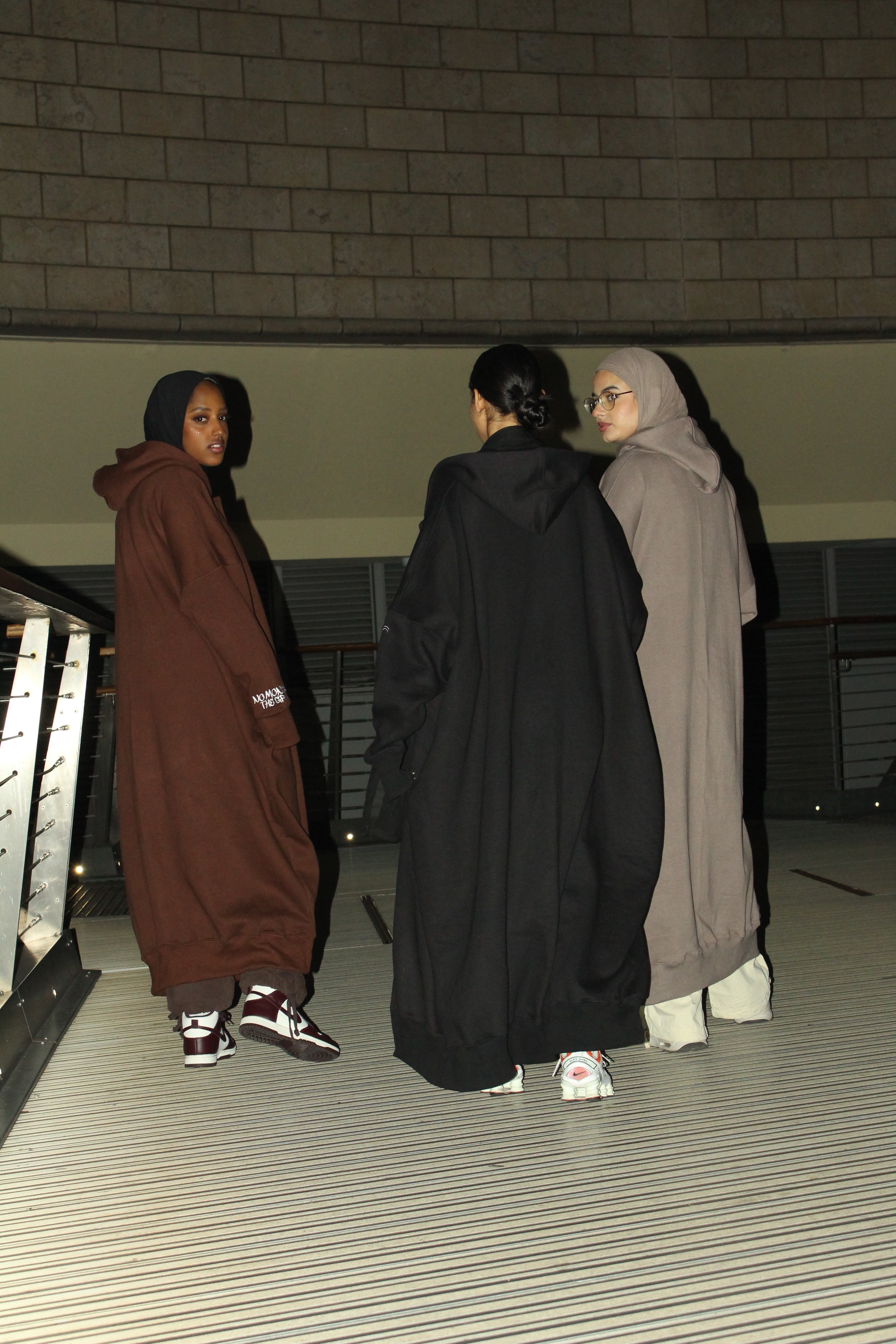
In homage to hip-hop, Saeedah incorporated embroidered phrases onto the cuff of each hoodie abaya, a subtle yet significant detail in her designs. Each collection release features a different message. The inaugural drop bore the phrase, “No money in the grave,” a clever play on lyrics from Drake and Rick Ross’s "Money in the Grave" (“When I die, put my money in the grave”) and an Islamic hadith declaring the insignificance of wealth in the afterlife (“When a person dies, all his deeds come to an end except three: ongoing charity, beneficial knowledge, and a righteous child who will pray for him”). This approach not only serves as a poignant reflection but also showcases Saeedah’s creative flair and individuality as a designer.
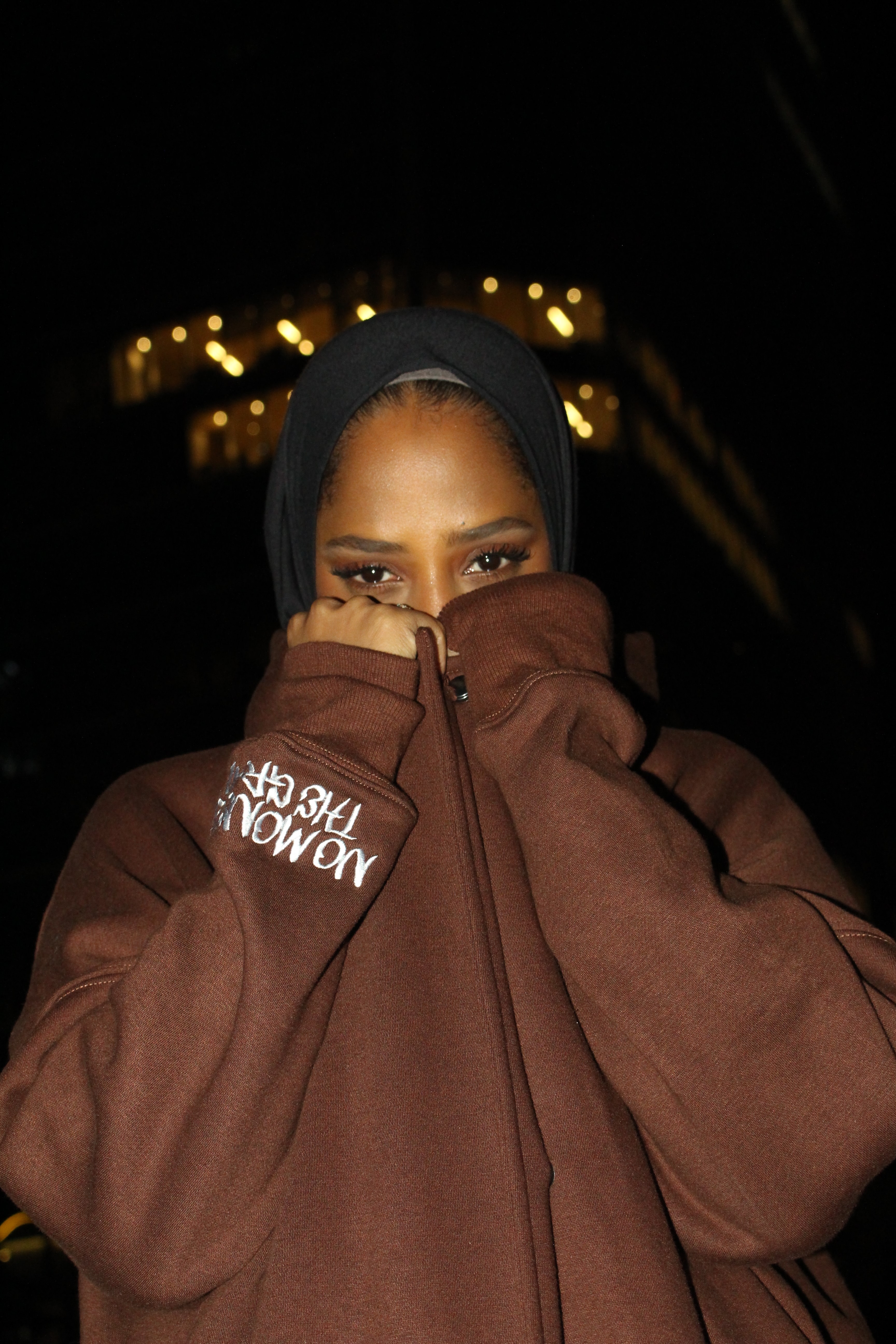
More poetically, Saeedah’s interpretation of the abaya reflects her multifaceted identity — a London-born daughter of Bangladeshi immigrants, a fashion lover, a devout Muslim woman in the West, and a fervent human rights advocate. Both her personal identity and her label emerge from a confluence of cultures; a unique point, like Cartesian coordinates in a multidimensional (or, if it’s precise to say, intersectional) space. “They would never really use a French terry,” Saeedah mentioned of traditional abayas when reflecting on the materials she experimented with in her designs; a casual comment that exemplifies the blend of her Islamic faith and London upbringing.
That’s why, in part, Saeedah didn’t create the hoodie abaya exclusively for Muslim women — something she’s frequently asked about on social media. As she says on TikTok, you don’t have to be Muslim to enjoy modesty. Because her upbringing instilled in her the importance of staying true to both her personal style and her values, Saeedah champions the idea that modest fashion is for everyone. She also believes that social media has played a pivotal role in not only empowering diverse designers like herself but also in making modest fashion accessible to young consumers.
When Saeedah founded her label in her bedroom, she had an Instagram account and a nonexistent network in the fashion industry. In her mind, the latter marked her biggest disadvantage. But toward the end of 2020, while scrolling through Instagram, she came across a post calling for applications for an incubation program by the VFiles Foundation, a nonprofit organization that invests in upcoming creatives driving systemic change. Initially, Saeedah wrote it off. (“I didn’t think I’d get it,” she confessed.) But 30 minutes before the deadline, she impulsively decided to try.
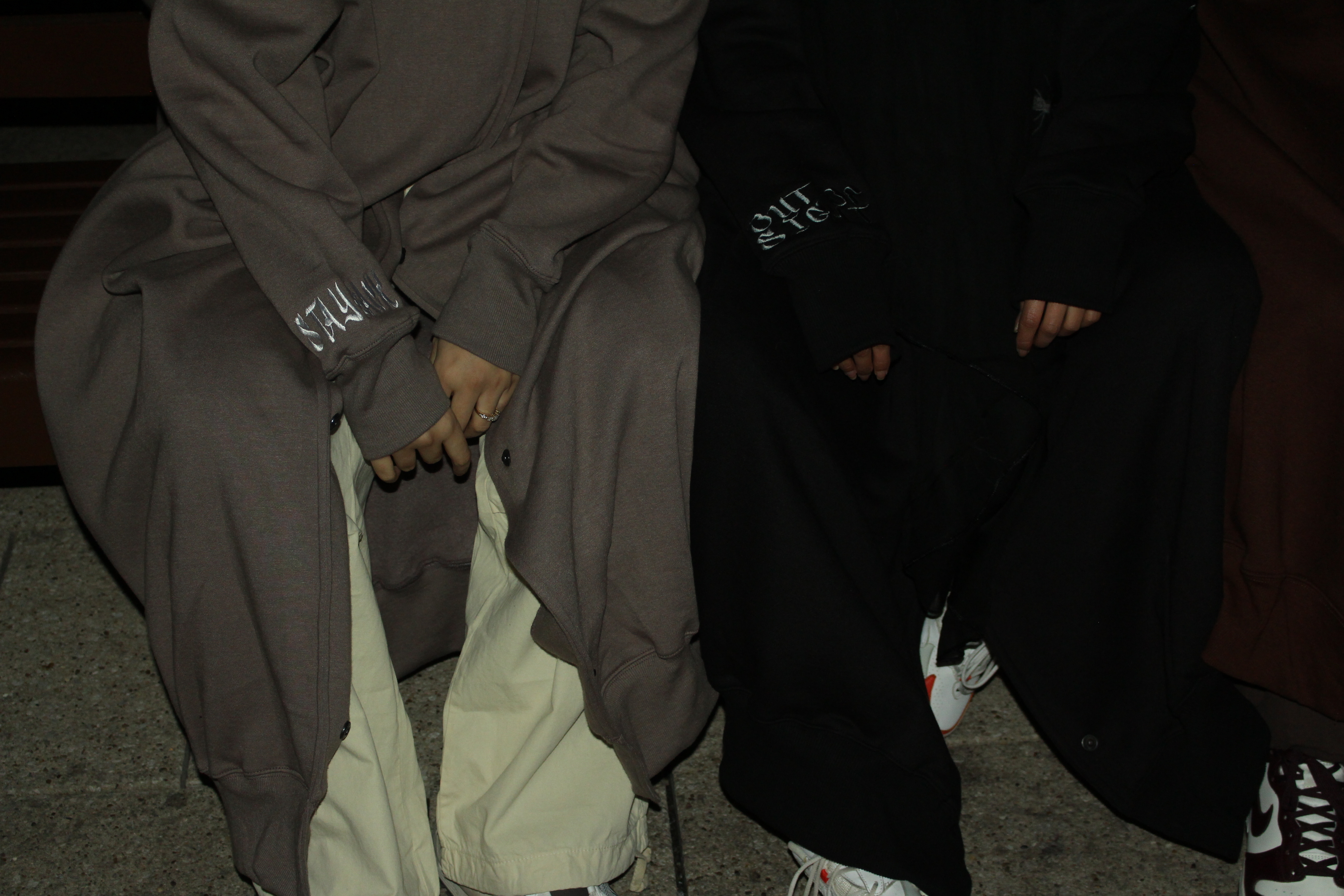
Ultimately, her acceptance into the program proved to be her break into the fashion industry. VFiles provided her with critical resources: funding, a feature in Vogue, brand credibility, a runway show, and professional mentorship (including one enthusiastically supportive mentor from Tom Ford). “For them to have such a huge network and all of this experience and knowledge, and then to see my idea and think it could really go somewhere, despite not being Muslim or from my community, it was really validating,” Saeedah remarked.
VFiles also offered Saeedah a platform to define the identity of her label. When it came time to produce a digital campaign showcasing her collection’s wearability, Saeedah turned to her friend Iqra Ismail, a British-born Somali soccer player celebrated for her leadership on and off the field. As captain of Somalia’s first women’s national soccer team and the founder of Hilltop WFC (a club dedicated to empowering marginalized players in London), Iqra embodies resilience for Muslim women athletes worldwide, proudly wearing a hijab — a symbol of her unwavering commitment to her faith and sport, even in environments where it’s often deemed “unsafe” or banned. For Saeedah, Iqra embodies the ethos of her label: unapologetic modesty. With that in mind, Saeedah designed her digital campaign to showcase Muslim women who choose to wear the hijab as unequivocally capable and unhindered in their pursuits.

After her experience with VFiles, Saeedah knew exactly how she wanted to promote her hoodie abaya. Leaning into the garment’s hip-hop and streetwear aesthetics, she opted for raw, underground visuals and enlisted her friends for the shoot. By eschewing overly curated imagery, Saeedah aimed to position the hoodie abaya as a natural addition to streetwear fashion — embodying comfort, boldness, and individuality. Ultimately, she wanted it to resonate with women in alternative scenes worldwide, from London to Brooklyn. “It’s really about having something very cool and essential that people can pick out and adapt to what they’re already wearing,” Saeedah said. “I don’t want them to wear my clothes and feel like they’re on their modesty journey or unlike themselves.”
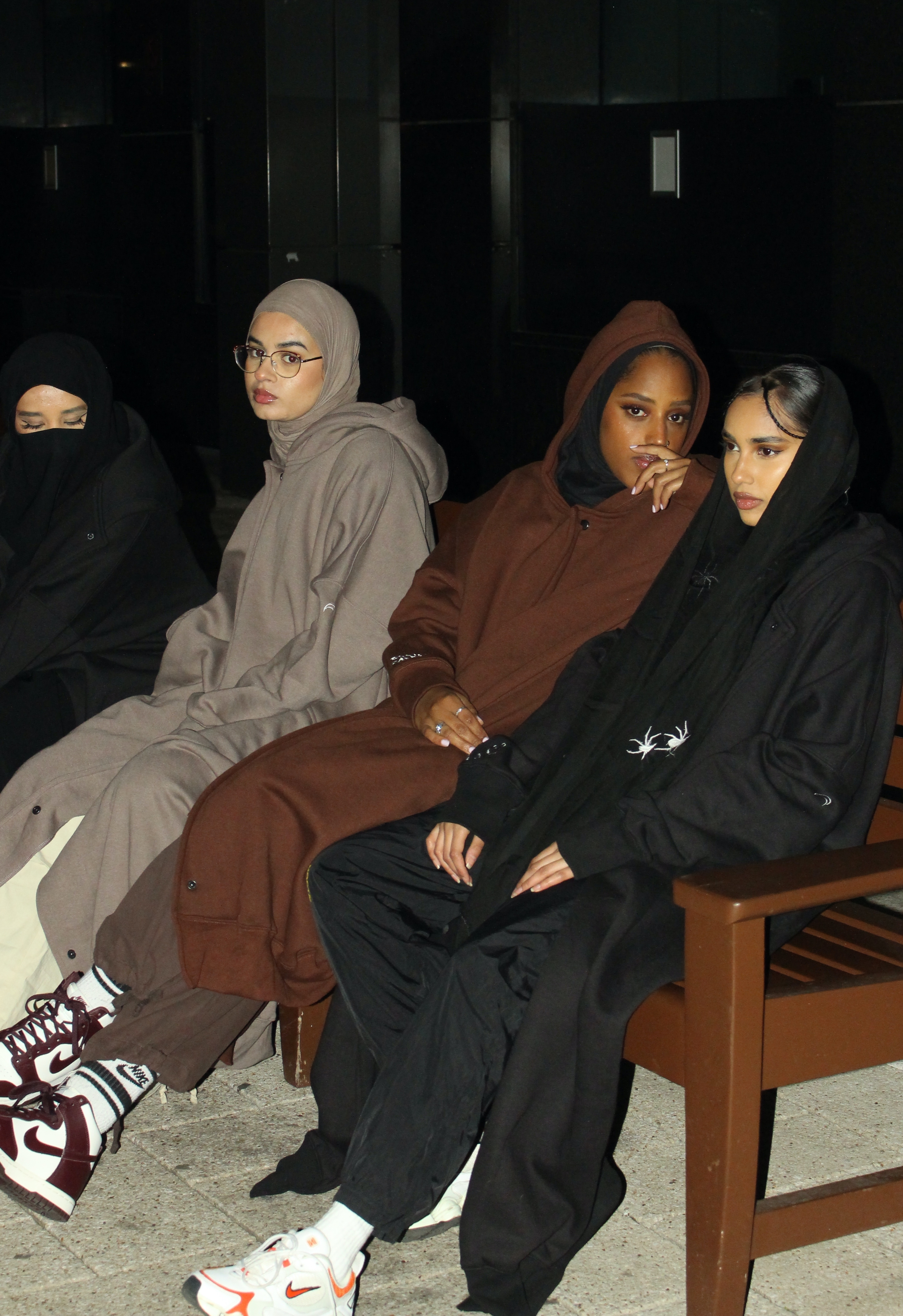
Beyond promoting her label, Saeedah leverages social media to document her journey as a designer. On TikTok, she shares insightful “Easter eggs” that inform her final designs and inherently educate viewers about Islam. “The garment is so much more than a piece of clothing; it’s part of my identity,” she stressed. This blurring of lines between Saeedah Haque, the person, and Saeedah Haque, the label, is thus innate. In authentically expressing herself and her spirituality, Saeedah asserts her agency and voice without waiting for external validation. Her social media presence by nature reclaims the narrative surrounding Muslim women and their hijab choices, advocating for a genuine understanding of Islam in the West rather than mere appropriation.
Oftentimes, when Islam does achieve visibility in the West, it’s distorted by anti-Islamic or Orientalist sentiments and stripped of its political realities. From meditation and yoga (“Namast’ay in bed”) to Ayurvedic medicine and turmeric (“golden”) lattes, the Western commodification of Eastern practices is nothing new or uncommon. Saeedah even pointed out the rebranding of sitting on the floor and eating with one’s hands — Eastern practices originally deemed uncivilized or unhygienic — as minimalist and sustainable in recent years.
In the fashion industry, this is seen as designers increasingly incorporate Islamic influences into their collections without acknowledging them. In 2018, British lifestyle and culture magazine Dazed even published an opinion piece called, “Is the fashion industry fetishising the hijab?” after major brands — including Alexander Wang, Calvin Klein, Versace, Lanvin, Dior, Chanel, Balenciaga, Marc Jacobs, and Gucci — presented “head coverings of various styles” at their AW18 shows that were only described as “sculptural headpieces” and “hooded headscarves,” ignoring “any possible Islamic roots or references.”
American fashion model Bella Hadid, who is Muslim and of Palestinian and Dutch descent, has also spoken out about the increasingly visible Islamic influence in the fashion industry and the simultaneous discrimination Muslim women face in fashion. In 2022, she wrote in the caption of an Instagram post: “Although different forms of the hijab and head coverings are starting to make an appearance in fashion, let’s still remember the daily struggle, abuse, and discrimination Muslim women face on a regular basis because of their faith and what they stand for.”
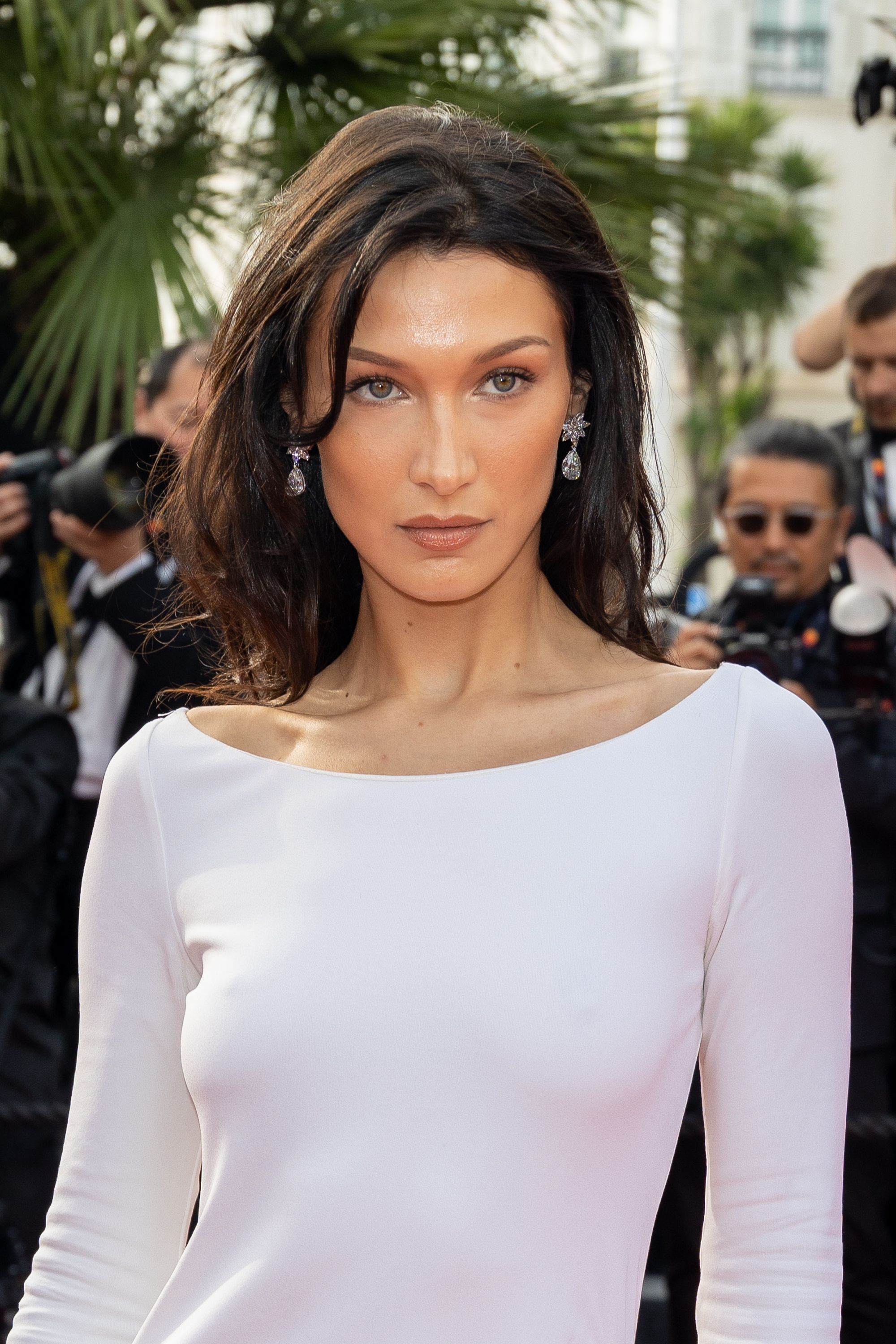
“At the end of the day, fashion is a form of storytelling. We talk about Muslim underrepresentation in film or TV, but I don’t think Muslim representation in fashion is spoken about enough,” Saeedah commented. “The appreciation for the garment is there; the appreciation for the creativity and the ideas is there. But the appreciation for the community is not necessarily there, and that’s really important. If we look at the political context, there are very normal girls and women suffering because they choose to wear certain garments. That’s something the fashion industry needs to be held accountable for. It’s clothing; everyone should be free to wear whatever they like. If they want to cover or not cover themselves — it should be a choice. A lot of people think fashion isn’t political or that they don’t have a say in politics. But if we could start that conversation, it would make a difference — not just in the political landscape but in the communities and the consumers.”
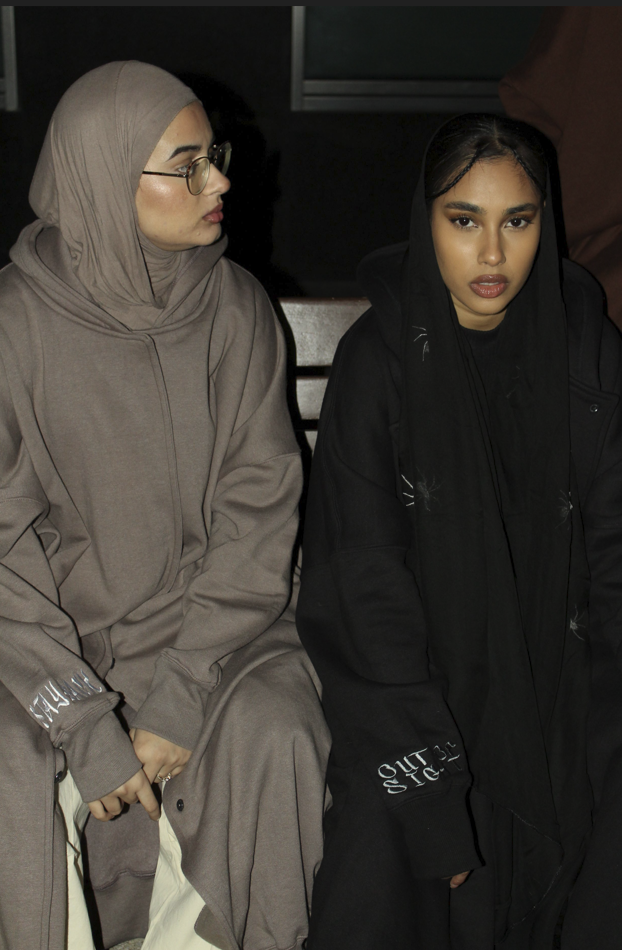
After noticing a shocking number of legal disputes that involved challenging dress codes, Stanford legal scholar and professor of law Richard Thompson Ford, who teaches employment discrimination and civil rights law, began researching historical fashion laws. In 2021, he published his findings as a book called Dress Code: How the Laws of Fashion Made History. In it, Richard argues that people have historically used dress codes to enforce political control and social hierarchies. As a result, fashion has long served as a tool in social activism to challenge norms by introducing new political models and subtly asserting social status. For instance, in the Middle Ages and the Renaissance, people resisted “sumptuary laws” that dictated clothing based social status.
Perhaps more familiar for Americans, Black civil rights activists in the 1950s–'60s demonstrated in their “Sunday Best” — meant to emulate the white middle class — to assert their dignity and demand respect. “There were laws in the United States at times that required Black people and slaves to dress in clothing that was considered appropriate to their status, which was the lowest status,” Richard told Stanford News. “For Black people to dress in a manner that was elegant and refined was a challenge to that type of power structure and that’s also part of what was going on with the Sunday best attire in the civil rights struggle.”
By the 1970s–'80s, The Black Panthers adopted a quasi-military style, recognizing the importance of aesthetics in political change and appointing a Minister of Culture. This awareness led to the emergence of the “Black is beautiful” movement, which deliberately addressed the political aspects of racial aesthetics and constructed a new Black aesthetic, reshaping prevailing beauty standards to embrace the Black community rather than emulate white aesthetics.
In the West today, the utilization of dress codes as a means of political control finds its most glaringly evident manifestation in France. Over recent decades, the nation has faced mounting criticism for its disproportionate focus on Muslim women, impeding the integration of Muslim communities, when enforcing religious restrictions under laïcité, its secular principle established in 1905. While secularism generally denotes the separation of church and state, France’s laïcité aims to minimize, if not outright prohibit, religious expression in public spaces. This stance has sparked contentious debates and legal battles concerning Muslim students’ rights to wear hijabs in public schools since the late 1980s — a reflection of the increasing visibility of the country’s growing Muslim population.
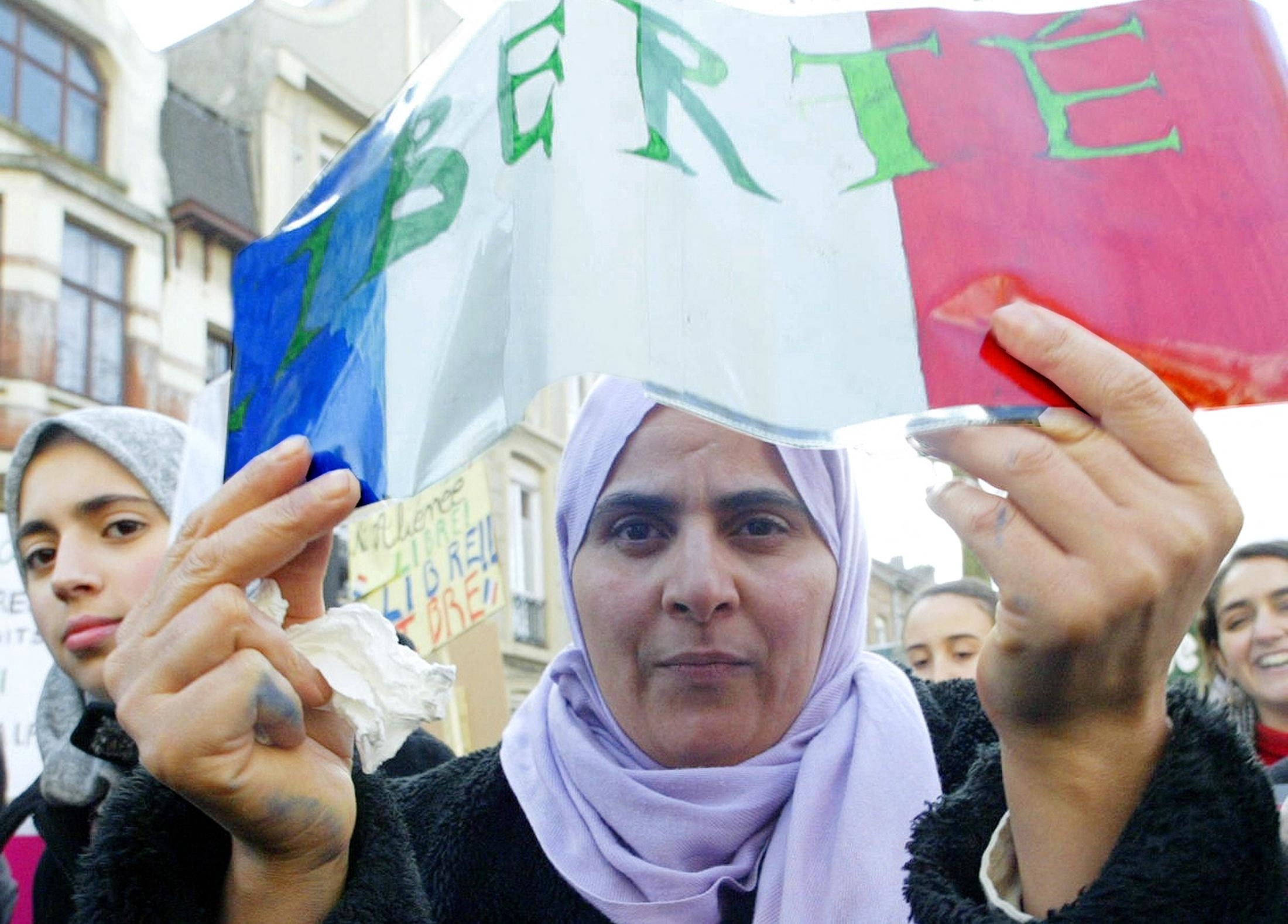
In 2004, France banned overt religious symbols in public schools, laying the groundwork for subsequent restrictions under laïcité. The country’s subsequent bans on burqa and niqabs in public spaces in 2010, followed by bans on abayas and qamis in public schools in 2023, were justified by security concerns and efforts to combat perceived “proselytism” and “communitarianism.”
To note, the 2004 ban of overt religious symbols included not only hijabs but also large Christian crosses, Jewish yarmulkes, and Sikh turbans. Curiously, small crosses and the Star of David are still permitted to be worn in public schools.
Despite being legally challenged as discriminatory, these bans have been upheld by France's State Council, with the French soccer federation also enforcing a ban on hijabs during competitions in 2023. As a consequence, Muslim women must confront daunting dilemmas between adhering to their religious beliefs and participating in certain sports. This is further highlighted by the recent ban on French athletes wearing hijabs at the upcoming 2024 Paris Olympics. (In response, the International Olympic Committee stated that athletes from other countries can wear hijabs according to their respective sports federations’ rules.)
Meanwhile, the global spotlight fell on Iranian rock climber Elnaz Rekabi in 2022 after she participated in an international competition in South Korea without wearing a hijab — a mandatory requirement for Iranian women athletes in national and international competitions. Less than a month earlier, the tragic death of Mahsa Amini while in custody of Iran’s morality police, allegedly for improperly wearing the hijab, sparked widespread protests within Iran and internationally for women’s rights.
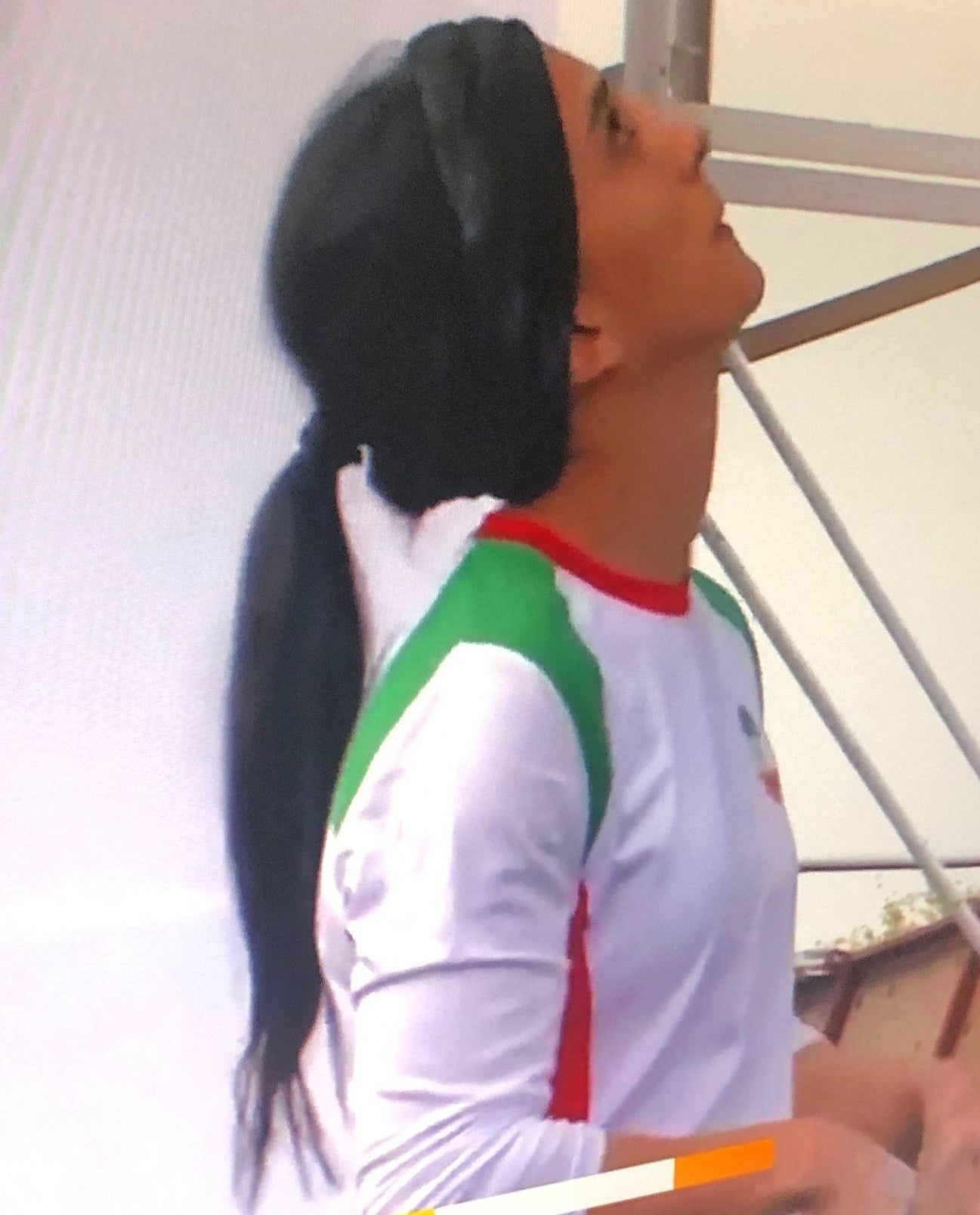
Upon her return to Iran, Elnaz issued an apology to state media, under what many believe to be duress, and reportedly faced house arrest. Later, reports from pro-reform media source IranWire stated that her house had been destroyed. Whether dictated by principles of secularism, counter-terrorism concerns, or authoritarian regimes, the attire of Muslim women remains a focal point of global scrutiny and regulation, underscoring the inherently politicized nature of fashion.
While designers like Saeedah or athletes like Iqra and Elnaz prove that wearing a hijab does not limit Muslim women, the choice to wear it or not wear it clearly does. Even the world’s largest supplier of athletic shoes and apparel, Nike, found itself embroiled in controversy upon announcing the release of the Pro Hijab in 2017. The announcement featured photos of figure skater Zahra Lari, triathlete Manal Rostom, and Olympic weightlifter Amna Al Haddad — all from the United Arab Emirates — as spokespeople for the product.

Though some criticized Nike for supporting “the oppression of women,” others praised the brand for supporting “equality, diversity, and acceptance in politically tense times.” However, supporters of the release within the Muslim community still swiftly pointed out that Muslim-owned brands have long offered athletic hijabs. Iranian triathlete Shirin Gerami commented, “My reaction was, ‘Oh, that's nothing new, the sports hijab has been around for decades.’”
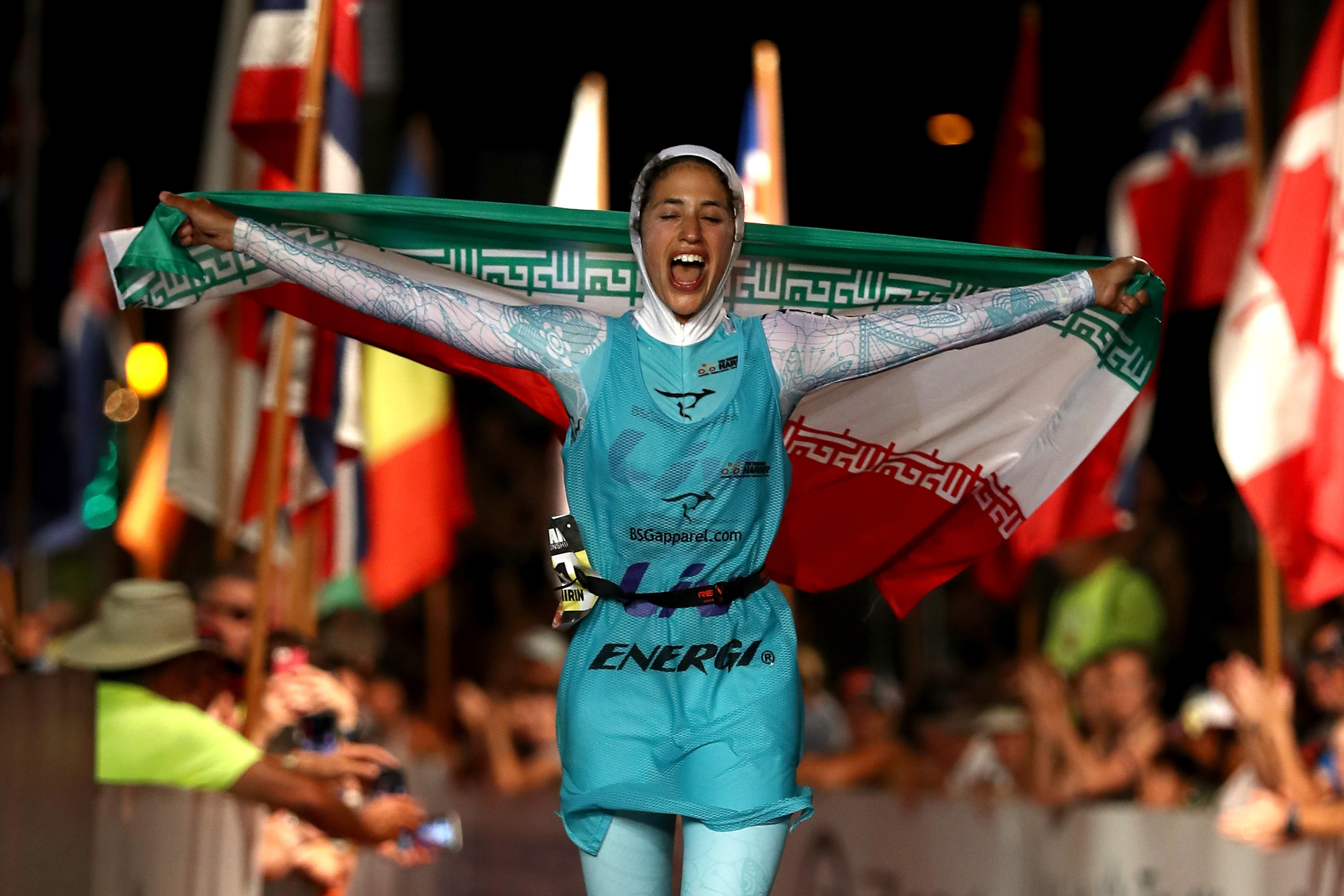
Although Nike isn’t the first Western brand to offer a sports hijab, it’s undoubtedly the largest. Despite speculation that the billion-dollar brand forayed into the modest activewear market as a cash grab amid political climates, Nike has also taken on scrutiny and political backlash for its stance on hijabs in sports. It’s even since released the Pro Hijab 2.0 and the Swim Hijab. For Saeedah, Nike's acknowledgment of Muslim women's presence in sports through these products signaled a breakthrough in representation. It wasn't merely about catering to an existing market but about creating space and visibility. As soon as Nike unveiled the Pro Hijab, Saeedah wasted no time visiting the brand’s website. “I just remember clicking the menu and hovering over ‘Women.’ Then, there were options for football, swimwear, and modest,” she recounted. “I remember clicking on the modest section, and there was Ibtihaj Muhammad.” In that moment, she felt like she was finally being seen.

In fact, Saeedah initially “pitched” her idea for the hoodie abaya to Nike by messaging individuals affiliated with the brand on LinkedIn. Due to the brand’s global influence, she believed Nike could reshape perceptions of Islamic clothing, possibly even surmounting French laïcité bans. If Nike slapped its trademarked Swoosh on a maxi dress (a term used interchangeably with abaya in the Middle East), she wondered, would it, too, be banned? Would it neutralize any cultural and religious connotations? While Saeedah didn’t initially hear back from anyone at Nike, she continued to pursue her vision independently. She created the hoodie abayas herself, launched her eponymous brand, and dropped five sold-out collections through her online storefront.
Through her brand’s online platform and social media presence, Saeedah shared her journey transparently, even expressing her belief to her followers that Nike could have been the ideal partner for her venture. During that time, her TikTok and Instagram platforms gained a combined 331.3K followers, many of whom continued to tag Nike in their comments. Then, by the summer of 2023, Nike responded. In August that year, the brand dropped the Nike By You x Saeedah Haque Limited Collection. The collection featured Swoosh-bearing Islamic clothing, including abayas and niqabs cut from DriFit jerseys like Saeedah had always envisioned. And in an arguably full-circle moment, Nike hosted a panel in London featuring Saeedah and Iqra to accompany the drop.
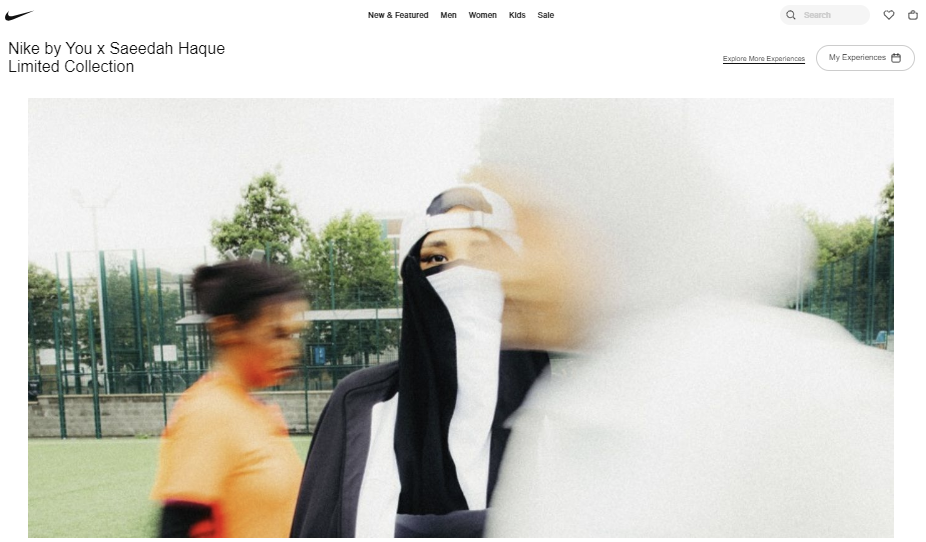
In looking back on her experience, Saeedah credits the viral success and global resonance of her label to the authenticity of her journey as a designer. From the start, she recognized that the significance of her label lay in reclaiming the narrative surrounding Muslim women and choice. As a self-taught British Bangladeshi Muslim woman from North London, Saeedah embodies the unapologetic modesty at the heart of her label, especially while navigating the Western fashion industry. At fashion events, she’s often found herself gracefully explaining her cultural norms, such as not shaking hands with men who aren’t family, to colleagues. “There are many ways of showing respect, right? Putting your hand over your chest or bowing — there are so many different cultural ways we can greet each other,” she remarked.
